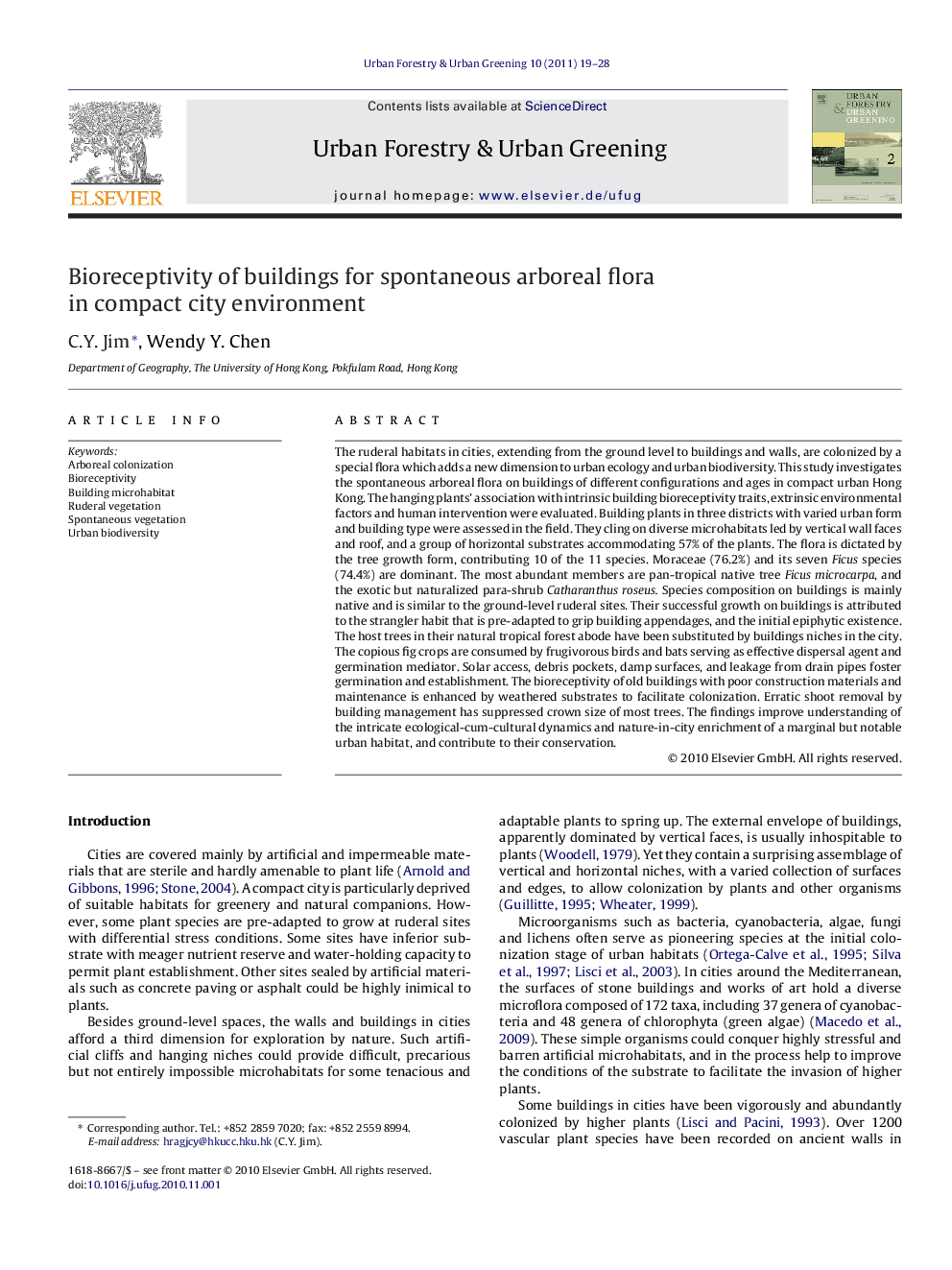| Article ID | Journal | Published Year | Pages | File Type |
|---|---|---|---|---|
| 94334 | Urban Forestry & Urban Greening | 2011 | 10 Pages |
The ruderal habitats in cities, extending from the ground level to buildings and walls, are colonized by a special flora which adds a new dimension to urban ecology and urban biodiversity. This study investigates the spontaneous arboreal flora on buildings of different configurations and ages in compact urban Hong Kong. The hanging plants’ association with intrinsic building bioreceptivity traits, extrinsic environmental factors and human intervention were evaluated. Building plants in three districts with varied urban form and building type were assessed in the field. They cling on diverse microhabitats led by vertical wall faces and roof, and a group of horizontal substrates accommodating 57% of the plants. The flora is dictated by the tree growth form, contributing 10 of the 11 species. Moraceae (76.2%) and its seven Ficus species (74.4%) are dominant. The most abundant members are pan-tropical native tree Ficus microcarpa, and the exotic but naturalized para-shrub Catharanthus roseus. Species composition on buildings is mainly native and is similar to the ground-level ruderal sites. Their successful growth on buildings is attributed to the strangler habit that is pre-adapted to grip building appendages, and the initial epiphytic existence. The host trees in their natural tropical forest abode have been substituted by buildings niches in the city. The copious fig crops are consumed by frugivorous birds and bats serving as effective dispersal agent and germination mediator. Solar access, debris pockets, damp surfaces, and leakage from drain pipes foster germination and establishment. The bioreceptivity of old buildings with poor construction materials and maintenance is enhanced by weathered substrates to facilitate colonization. Erratic shoot removal by building management has suppressed crown size of most trees. The findings improve understanding of the intricate ecological-cum-cultural dynamics and nature-in-city enrichment of a marginal but notable urban habitat, and contribute to their conservation.
